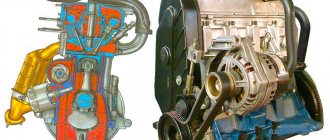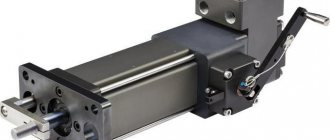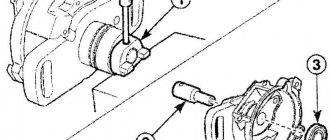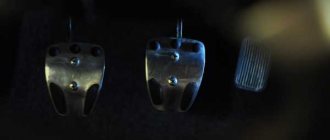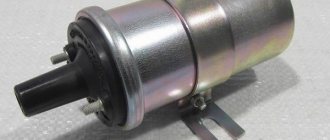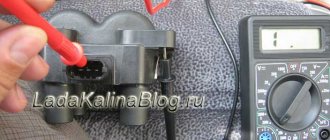Many experts are inclined to believe that the engine is the structural basis in any car. In the promising Lada Vesta model, the power unit is available to the buyer in three versions. Many people are interested in what engine is in their car. The first two engines have an identical volume of 1.6 liters, and the third is 1.8-liter. All engines have the same number of cylinders - four and valves per cylinder - also 4, this information is about which engines are installed in Vesta.
In order to determine which engine is in a particular Lada Vesta, you will need to know not only the modification, but also the configuration. The least powerful is the 1.6-liter unit of domestic origin (VAZ-21129), which is capable of output of 106 “forces”. Owners are often inclined to chip tuning, regardless of what engine it is, in order to improve basic performance. This is the most common version of the unit, of which engines are installed, and therefore information about its design and features is present in sufficient quantities on the Internet.
What features does the VAZ-21129 engine have?
This engine can be equipped in a Lada Vesta car with either a manual or automatic transmission. The ancestor of this unit was the well-known VAZ-21127 engine, which is considered obsolete and does not meet the requirements of environmental standards according to the Euro-5 system.
The updated unit has modern options and progressive design features, which allows it to be compared with engines of foreign-made competitors. Among these features, experts include:
- reduced compression ratio, allowing the use of fuel with a lower octane number;
- modified exhaust system;
- structurally redesigned intake system;
- updated ECU firmware.
The appearance of the engine has also become more modern. The perimeter of the unit is “overgrown” with all sorts of sensors of the electronic control system.
Note that this version of the engine is most common in the “Comfort” configuration. The designers also took care of creating a sports variation of the car, where they placed a forced engine capable of developing 150 hp. With. The unit considered here served as the basis for such a “fiery heart”. What engines are installed in all versions of the model?
The engineers were able to achieve the indicated results by applying the following design solutions:
- Reduced losses due to friction in the cylinders. Here the idea of reducing the thickness of both compression and oil scraper rings was implemented.
- Improvements to the exhaust system, where a structurally new resonator is used.
- Use of lightweight pistons made of a special aluminum alloy.
On a note! It has been proven by experience that the natural oil consumption in a VAZ-21129 engine is 3 ml per 1 liter of gasoline consumed. This means that approximately 25% of 1 liter of oil present in the engine will be wasted over a mileage of 1 thousand km. This is a good result, because in comparison with domestic engines, the power units of some foreign cars consume much more lubricant over the same distance.
Now let's look at the main characteristics and features of the VAZ-21129 power plant:
- power, as already noted, 106 hp. With.;
- the torque is 148 Nm;
- It is possible to boost the unit to 150 hp. With.;
- you should start changing the oil every 15 thousand km;
- uninterrupted operation of the engine at any speed is partly achieved thanks to the use of a special damper system inside the intake manifold;
- the working pressure value in the chambers (compression) is 12.5 atm;
- predicted resource – 200 thousand km.
Features of 21129 engine/differences
The main feature of the 129 engine is the “innovative” for AvtoVAZ installation of an intake receiver with variable chamber geometry and volume. Due to the damper, the volume of the intake chamber changes depending on the speed. As practice shows, the damper is activated at 3500 engine speeds.
In addition, the engineers managed to get rid of the mass air flow sensor - mass air flow sensor. Along with him, his ailments went away, which tormented the owner of the 21126 engine: unstable idling, sometimes exorbitant consumption, high cost. Instead of mass air flow sensors, engineers installed a connection from DBP and DTV sensors (atmospheric pressure and air temperature sensors).
Differences 21129 from 21126 (mounted layout, transition from mass air flow sensor to DTV DBP, presence of an intake receiver with variable geometry.
Differences between 21129 and 21127 (Different layout, different firmware)
Motor "VAZ-21179"
This version of the power unit for Vesta is the first of its kind, because its volume is still the largest - 1.8 liters. Some experts are inclined to believe that the manufacturer will equip the long-awaited new product with this unit – the Vesta Cross station wagon. This engine is available with a 5-speed automatic transmission. The assembly of the unit is carried out using a selective method.
Now let’s take a closer look at the technical parameters and other important aspects specific to this motor.
- From a 1.8-liter volume, the developers managed to squeeze out 122 “horses” - this is real power.
- The engine is designed to consume 95 gasoline, and the level of exhaust toxicity is within the regulated values of the Euro-5 system.
- The torque reaches 170 Nm;
- Experts assure that the engine is capable of covering a repair-free range of 300 thousand km, which is rare for modern cars.
On a note! The level of fuel consumption of this engine is slightly higher than that of analogues used by the manufacturer for Lada Vesta. This is explained by the large volume of the working chambers of the unit. Many owners are not embarrassed by this situation, since the engine compensates for this conditional disadvantage with improved dynamic and speed capabilities.
Oil pump for engine 21179 (L1.8 122 hp) for VAZ Vesta, X-Ray
Dear customers, in order to avoid mistakes when sending an oil pump to the VAZ 21179 engine (L1.8, 122 hp) Lada Vesta / Lada Vesta, LADA XRA-Y / Lada X-Ray, in the “Comment” line, indicate the engine size and the number of valves , model and year of manufacture of your car.
New VAZ 21179 engine for Lada Vesta / Lada Vesta, LADA XRA-Y / Lada X-Ray with a volume of 1.8 liters and a power of 122 hp. became a real discovery for Russian consumers, who had long been waiting for a modern, powerful and economical engine. Installed in cars with a robotic automatic transmission and a manual transmission.
Any internal combustion engine installed in a car has a fuel pump, an oil pump and a water pump in its design. These are three important components that affect the operation of the motor. So, without a pump, the coolant will not circulate, and without an oil pump, the lubricant will not reach the camshaft from the pan.
The engine lubrication system is as important as any other. Its serviceability is the key to proper, long-lasting operation of any engine.
Lubrication performs several important functions:
— eliminates engine overheating;
— protects parts from corrosion and removes friction products of parts from the mating area.
1 — oil pump assembly (21176-1011010-01 / 8450075132), 2 — oil pump cover gasket (8450057099), 3 — oil pump receiver assembly (8450060825), 4 — O-ring (8450053833), 5 — flange mounting bolt pump cover (8450056362), 6 — flange bolt for fastening the receiver (8450056973), 7 — flange bolt for fastening the oil pump (8450056974), 8 — oil pressure warning lamp sensor (8450051296).
Oil pump 21176-1011010 is designed to supply oil under pressure of at least 1.0 kgf/cm at a minimum engine speed of 750-800 rpm to the rubbing surfaces of VAZ engine mechanisms.
Oil is pumped through the system under pressure; its presence in the system is indicated by a lamp on the dashboard with an oil can symbol.
The oil pump is located just below the fluid pump, just behind the crankshaft pulley. The aluminum cover is attached with several bolts to the engine block.
The pump is installed on a vehicle designed for operation at ambient temperatures from minus 40°C to plus 45°C and humidity up to 90% at plus 27°C.
Before assembling the pump, be sure to lubricate the drive and driven gears, the housing in the gear area, the rubber O-ring of the oil receiver tube and the pressure reducing valve with engine oil.
The design of the oil pump and the materials used ensure its performance when operating a vehicle with a mileage of at least 125 thousand km.
After assembling the pump, when turning the gears by hand, they should rotate smoothly, without jamming or jerking.
The clouds of bluish smoke escaping from the exhaust pipe give the driver many unpleasant thoughts. This most often indicates an unpleasant, but inevitable moment in the life of a car - engine repair.
When the car has traveled approximately 150 thousand kilometers, noticeable wear of the piston group occurs.
Like any other Lada Vesta / Lada Vesta car, LADA XRA-Y / Lada X-Ray periodically needs maintenance and repairs. Moreover, serious work and financial costs can be avoided if the machine is operated as correctly and carefully as possible. Knowledge of operating features and rules for minor repairs can significantly save the family budget.
Technical characteristics of the Crankshaft 21177 - 1005020 - 00 for the VAZ 21179 engine with a displacement of 1.8 liters:
Piston stroke, mm 84;
Crank radius, mm 42;
Connecting rod journal diameter, mm 43;
Factory balancing.
Crankshaft for VAZ 21179 engine with a displacement of 1.8 liters with catalog number: 21177 - 1005020 - 00. Stroke 84 mm. Main journals: 50.73 - 50.817 mm. Crankpins: 42.896 - 42.984 mm. Possible installation in VAZ engines: 11183, 11194, 21114, 21116, 21124, 21126, 21127, 21128, 21129. With such a crankshaft, you can get an engine displacement of 1774 cc. cm with 82 mm piston up to 1862 cc. with piston 84 mm.
To install a crankshaft with an increased stroke, pistons with a reduced compression height or shorter connecting rods will be required.
The cylinder block of the VAZ 21179 engine is made of cast iron and has the same dimensions as the 1.6 liter version. The designers increased the piston stroke from 75.6 to 84.0 mm, for which a crankshaft 21177-1005020-00/00-00003965 was installed with an increased radius of the connecting rod journals from 47.8 to 43 mm.
For better cooling, the number of channels in the block and head has been increased. At the casting stage, the cast iron block has additional platforms for mounting the engine in the engine compartment not only across, but also along.
Aluminum cylinder head and aluminum pan. There are 16 valves per 4 cylinders. The timing mechanism is driven by a belt. The intake and exhaust camshaft pulleys are different. The actuator of the variable valve timing system is located on the intake shaft. The mechanism for changing the timing phases allows you to optimize the supply of the fuel mixture to the combustion chambers at different operating modes of the power unit, opening or closing the intake valves a little earlier or a little later.
The VAZ 21179 engine has a number of design features:
— a new automatic timing belt tensioner has been used — with two rollers;
— lightweight connecting rod and piston group;
— lightweight valves;
— new exhaust manifold with holes enlarged to 39 mm;
— fuel injectors have an optimized spray pattern;
— oil and water pump of increased productivity;
— the throttle assembly does not have a mechanical connection with the gas pedal. There is no cable from the pedal, only a wire transmitting the signal from the pedal position sensor to the throttle.
The new VAZ 21179 engine can run freely on AI-92 gasoline. According to the manufacturer, the service life of this engine of 400 thousand kilometers is not the limit. Replacing the timing belt is not required often; according to AvtoVAZ engineers, it can last up to 180,000 kilometers.
For Lada Vesta / Lada Vesta with a VAZ-21179 engine, a manual 5-speed VAZ-21807 gearbox has been developed.
LADA XRA-Y / Lada X-Ray manual with an engine capacity of 1.8 liters has a different Renault JR5 gearbox, which has an increased clutch from 200 to 215 mm.
The VAZ-21179 engine with a volume of 1.8 liters can be used not only on front-wheel drive Lada Vesta / Lada Vesta, LADA XRA-Y / Lada X-Ray (on Largus), but also on Niva, where the engine is installed longitudinally.
Other article numbers of the product and its analogues in the catalogues: 21176101101001, 21176-1011010-01.
VAZ 11183, VAZ 11194, VAZ 21114, VAZ 21116, VAZ 21124, VAZ 21126, VAZ 21127, VAZ 21128, VAZ 21129, Lada Largus, Lada Vesta / Lada Vesta, LADA XRA-Y / Lada X-Ray with engine capacity 1.8 l.
Any breakdown is not the end of the world, but a completely solvable problem!
How to replace the oil pump yourself on a Lada Vesta family car.
AvtoAzbuka Internet Store, repair costs will be minimal.
Just COMPARE and BE SURE!!!
Don't forget to share the information you find with your friends and acquaintances, because they may also need it - just click one of the social networking buttons located above.
Engine from Renault-Nissan
This 1.6 imported “heart” engine “HR16” will upset the buyer with its high cost. But the unit is able to please with its remarkable reliability. The developers also endowed this engine with the ability to convert it to run on gas fuel. Here future owners of LADA Vesta have a choice.
On a note! The main advantage of the H4M-HR16DE power plant is the timing chain drive. This point relieves the owner of LADA Vesta from the need for frequent periodic replacement of elements of the gas distribution unit (as in a belt drive) and allows him to save money.
This version of the Lada Vesta engine is endowed with balanced characteristics, among which it is worth highlighting the following points:
- The real power is greater than that of the Russian analogue 1.6 engine, because it is 114 “forces”.
- The maximum torque reaches 153 Nm.
- Fuel consumption is equal to: 8 liters in the urban cycle and 5.5 liters in suburban directions.
- The expected resource is at least 250 thousand km.
The manufacturer also plans to equip the LADA Vesta “coupe” modification with this engine, which promises to be bright and fast. Now you know which engine is in your model.
Specifications
Technical characteristics of the HR16DE motor:
Download .xls file
xls
Download picture
Send by email
| PARAMETER | MEANING |
| Years of manufacture | 2006 – present |
| Cylinder block material | aluminum |
| Supply system | injector |
| Type | in-line |
| Engine displacement | 1.8 |
| Power | 110 horsepower at 6000 rpm |
| Number of cylinders | 4 |
| Number of valves | 4 |
| Piston stroke | 83.6 |
| Cylinder diameter | 78 |
| Compression ratio | 9.5 |
| Torque, Nm/rpm | 153 Nm / 4400 |
| Environmental standards | EURO 5 |
| Fuel | AI 92 |
| Fuel consumption | 6.9 l/100 km combined cycle |
| Oil | 5W-30 – 15W40 |
| Oil volume | 4.6 |
| When replacing, pour | 4.3 liters |
| The oil change is carried out | 10 thousand km |
| Engine life - according to factory data - in practice | n.d. 250+ |
The engine is installed on Nissan Qashqai, Juke, Micra, Sentra, Note and Lada Vesta.
Tuning the VAZ 21128 1.8 engine for the city
For the city, it would be correct to install a receiver, a 54 mm damper, a zero filter, a 4-2-1 spider on such an engine and get the legal +\- 120 hp. You should forget about the top shafts, the motor has a low torque and doesn’t like revs, so you won’t be able to spin it up, and at the same time you won’t be able to inflate it with a compressor, the crankshaft is too weak. Therefore, in order to tune the Priora 1.8 engine, you need to change the bottom, remove the 84 elbow and install 80 mm. You can bore the cylinders up to 84 mm, this configuration will spin better. One way or another, we will come to the usual tuning of the VAZ 21126 engine.
VAZ-11189
This engine is considered the weakest that can be installed on the Lada Vesta. This is indicated by an objective comparison of the technical characteristics of Lada Vesta engines - on this unit all indicators are significantly lower than on other versions.
At its core, the VAZ-11189 is a direct modification of the older VAZ-11186 - the only difference between the engines is different intake and exhaust valves, and the engine itself remains the same.
According to the previous experience of the AvtoVAZ concern, whose VAZ-11189 engine was installed on Grant and Priora in basic configurations, this power unit performed well when assembled with a five-speed manual transmission. However, it is worth considering that the dimensions and, accordingly, the weight of the Lada Vesta are quite significantly higher - which means that the engine characteristics may be insufficient.
At this stage, the designers are thinking about refusing to equip the Lada Vesta sedan with this unit. If the engine power, amounting to only 87 horsepower with a volume of 1.6 liters, turns out to be truly insufficient, this could seriously undermine the authority of the model as a whole.
Reviews
| № | Positive |
| 1 | Andrey (Avtodrom): I’ve been driving carefully for three years now and systematically carry out maintenance. I heard about the valve problem. I think that a lot depends on the driver. |
| 2 | Sergey (Avtotema): I have a 16-valve engine, the pickup from the bottom is weak, but on the highway the engine is a “beast”, I have no complaints about the internal combustion engine, I’m happy with the purchase. |
| 3 | Kirill (Autoreview): the engine has driven 65,000 km and is normal; at every service I carry out diagnostics. |
| 4 | Alexey (Avtoria): unlike Granta, Vesta is more powerful, with a good pick-up. I'm glad for the domestic manufacturer. |
| 5 | Alexander (Drom): my positive review of the VAZ 21116, four years of active use without any comments. |
| 6 | Stanislav (Driving): I have no problems with the car, the mechanisms are working normally. |
| 7 | Vasily Alekseevich (“5th wheel”): at 50,000 km the alternator belt began to whistle, tightened it. The valves do not knock, the engine runs smoothly. |
| Negative | |
| 8 | Vitaly (Avtotema): recently the belt drive broke, fortunately it reacted with lightning speed, the valves were not damaged. |
| 9 | Svyatoslav (Otzovik.net): when they broke, the first and third pistons were deformed, replaced them with new ones. The repairs weren't cheap. |
| 10 | Vlad (ProAuto): I regret that I bought Vesta with a domestic engine, my comrades advised me to buy it with a Renault engine. |
What engine is installed on the Lada Vesta and SW Cross generation?
Serial versions of the Lada Vesta SV Cross are equipped with 3 domestically developed internal combustion engines and 1 foreign one. At the same time, 2 engines are modernized and have enlarged intake channels with 8 and 16 valves, which has a positive effect on dynamic characteristics.
The front-wheel drive of VAZ cars is adapted for a line of low-power internal combustion engines. With an average power rating of 100 l/s, the model is capable of accelerating to 100 in less than 12 seconds.
It is worth noting that there is a third type of domestic internal combustion engine, which has a volume of 1.8 liters. This motor (21129) is considered the most powerful available. The power unit develops 122 hp. The increased power engine of the Lada Vesta SW Cross is the result of boring the standard version 21126 1.6 liters.
Proper calculation made it possible to achieve the required margin of safety and dynamism, as well as get rid of the shortcomings of previous versions.
Installation of alternative engines on Vesta
Equipping the Lada Vesta with other engines is not yet widespread. This car has not yet become a cult car, like, for example, the Lada Priora. There is no detailed information about how and what power plants can be installed instead of the standard ones. This topic remains at the theoretical level for now. Basically, as the most affordable method, it is proposed to install a turbine; moreover, this is the most budgetary tuning option that can increase power and dynamic characteristics without the need to completely replace the engine. The design features of Vesta are similar to Lada Priora, so theoretically it is possible to install different engines, for example, from Mazda, Honda, or Ford Focus. If everything is more or less clear with the choice, many nuances should be taken into account when making such substitutions:
- Installing an alternative motor will require much more financial investment than the same procedure with installing a standard unit.
- If you have the opportunity to buy a higher-class car, it is better to buy it than to spend even more on installing an engine under the hood of a budget car.
- Replacing the motor will require replacing the brake system and other elements.
- The project requires not only financial investments, but also a lot of free time.
- Without the appropriate knowledge, skills and experience, the project is doomed to failure.
- One cannot cope with such work alone.
Engines on Lada Vesta satisfy any requirements of motorists. In fact, for the first time, a Lada car receives a whole line of power units from the weakest to the most powerful; a foreign-made unit has appeared. Engineers also announce the possibility of installing a diesel engine, but when this will happen is unknown. The diesel engine is more economical, which means it will be very popular in Russia. This will be the first diesel engine in the history of AvtoVAZ.
We recommend reading:
- Does a Lada Vesta car owner really need car chip tuning and which one?
- Modern Lada Vesta or modernized Renault Logan?
- The domestic Lada Vesta car still needs rear mudguards
- Selecting and changing oil on Lada Vesta
- Gearbox for Lada Vesta: structural features and repairs
- Lada Vesta bumper: methods of dismantling and increasing protection of parts
Advantages and disadvantages of the 1.6 engine
The 1.6 and 1.8 engines installed on the Lada Vesta SW Cross have their advantages and disadvantages. When choosing a car, you need to pay attention to the characteristics of its power unit, because the quality of the trip and possible financial costs for repairs will depend on its reliability.
Main advantages:
- Complies with European standards;
- Complies with environmental standards;
- The engine contains hydraulic compensators that smooth out the shock load;
- Time-tested design.
Flaws:
- Hydraulic compensators may knock for some time immediately after starting;
- Not the most economical;
- Over time, engine oil may develop.
Malfunctions
When the timing belt breaks, the engine, like its brothers in the line, bends the valve.
Important: according to the regulations, the belt is replaced every 120 thousand km, but it is advisable to do this more often, based on the condition of the pump and idler pulley. It is also known that the first samples showed increased engine oil consumption, but this problem was later corrected. Other malfunctions are typical for 16-valve engines from VAZ and have already been discussed above - problems with the thermostat, tripping, noise and knocking in the engine.
